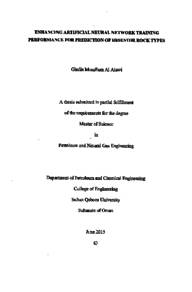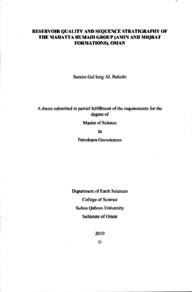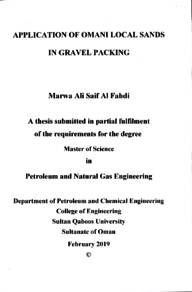Document
Enhancing artificial neural network training performance for prediction of resevoir rock types.
Publisher
Sultan Qaboos University
Gregorian
2015
Language
English
English abstract
Reservoir rock type (RRT) is an integral part of the reservoir characterization process, which is among the key input parameters into three-dimensional geological and flow simulation models. Several techniques and methods are available for reservoir rock type prediction. The most direct method is based on core data analysis, which is not only time-consuming but also very expensive, while an indirect method is via the log analysis, which is cheap, fast and can be found in most of the wells in the field.
Artificial neural network (ANN) has gained popularity in recent times and is being used widely these days for reservoir characterization prediction. Generally, the most important stage in modeling reservoir rock type using ANN is the training stage where the input variables were selected to be fed to the model. To choose a set of significant inputs is a combination problem, and the selection procedure can be very time consuming.
The methodology proposed in this thesis is to provide a ranking method to select the optimum well logs to predict the RRT. Stepwise regression and rank correlation input selection methods are used to rank the log data input with the degree of influence at the desired output of the ANN. Variables ranked as important by the two methods are used as input to ANN. This helps in building a robust and reliable neural network for the analysis. The results obtained from the two methods confirm that four well logs (e.g. RHOB, NPHI, GR and Stratigraphic units) are the most significant input variables to the ANN for RRT prediction. The prediction results were excellent and the error percentage between the core RRT and predicted RRT was found to be 10 %.
This work demonstrates that by using ranking methods, high classification accuracies can be achieved in a fraction of the time required by the well-known traditional RRT prediction methods.
Member of
Resource URL
Arabic abstract
تحديد نوعية صخر المكامن هو جزء لا يتجزأ من عملية توصيف المكامن, الذي هو من بين البيانات الرئيسيه المدخله إلى نماذج المحاكاه الجيولوجية والتدفقية ثلاثية الأبعاد. العديد من التقنيات والطرق تكون متاحة للتنبؤ بنوعية صخر المكامن. الأسلوب الأكثر مباشرة هو تحليل بيانات اللب الأساسية التي تعتبر مستهلكة للوقت و مكلفة جدا, بينما الأسلوب غير المباشر هو من خلال تحليل القياسات البئرية التي تعتبر رخيصة وسريعة بالإضافة الى توفرها في معظم الأبار وقد اكتسبت الشبكة العصبية الاصطناعية شعبية في الآونة الأخيرة، ويجري استخدامها على نطاق واسع هذه الأيام للتنبؤ توصيف المكامن. بصفة عامة، أهم مرحلة في نمذجة نوع صخر الخزان باستخدام الشبكة العصبية الاصطناعية هي مرحلة التدريب حيث يتغير المدخل عندما يتم اختياره لتغذية النموذج. كي يتم اختيار مجموعه متميزه من المدخلات تكون مشكلة مجتمعة وإجراءات الاختيار يمكن أن تأخذ وقتا طويلا لكي تحقق المنهجية المقترحه في هذه الأطروحة لتوفير طريقة الترتيب لتحديد السجلات الأمثل بشكل جيد للتنبؤ بتحديد نوعية صخر المكامن. طرق اختيار مدخلات الانحدار التدريجي وصف الترابط قد استخدمت لصف مدخلات بيانات التسجيلات مع درجة التأثير على النتيجة المرجوة من الشبكة العصبية الاصطناعية المتغيرات قد صفت من حيث الأهمية الي طريقتيين قد استخدموا كمدخلات إلى الشبكة العصبية. هذا قد ساعد في بناء شبكة عصبية قوية وموثوق بها التحليل النتائج التي تم الحصول عليها من الطريقتين تؤكد أن أربعة سجلات الآبار هي المتغيرات الأساسية الأكثر أهمية إلى الشبكة العصبية الاصطناعية لتنبؤ نوعية صخر المكامن. نتائج التنبؤ كانت ممتازة وهامش الخظا بين نوعية صخر المكامن اللوبية و نوعية صخر المكامن المتنبأة وجدت لتكون 10 %. هذة الأطروحة تبرهن أنه يمكن تحقيق تصنيف عالي الدقه في جزء من الوقت المطلوب وفقا لأساليب التنبؤ التقليدية المعروفة.
Category
Theses and Dissertations







